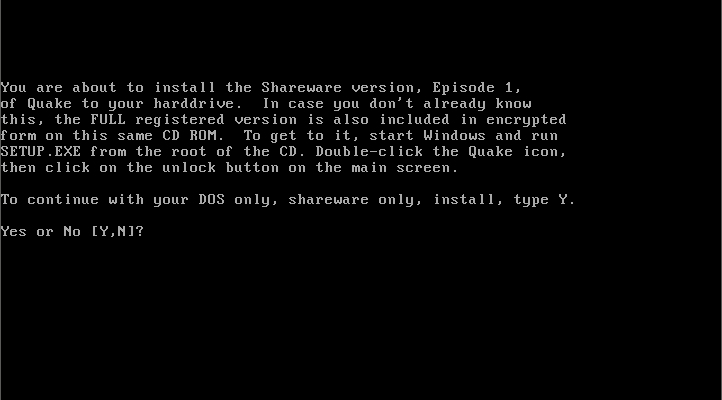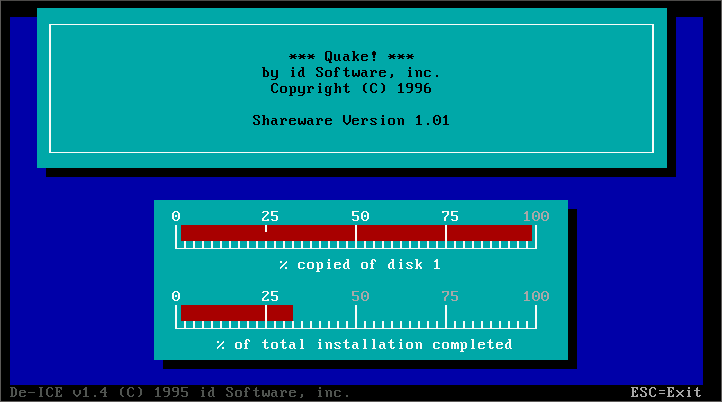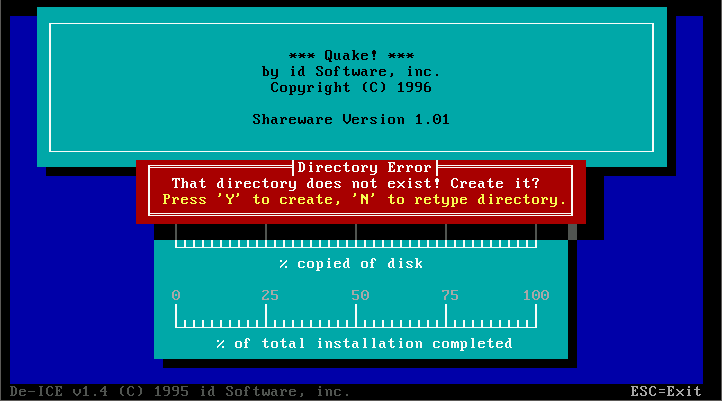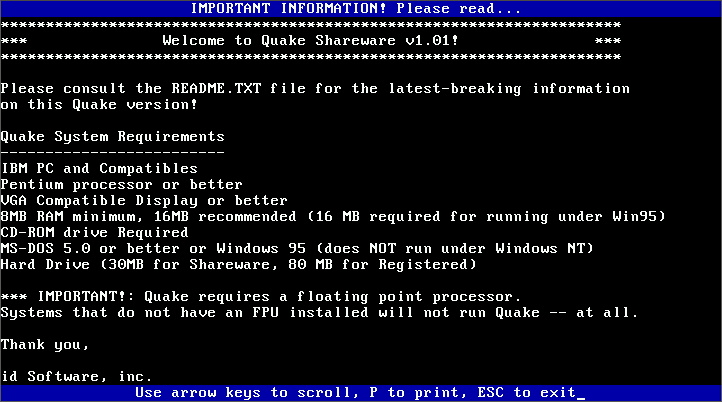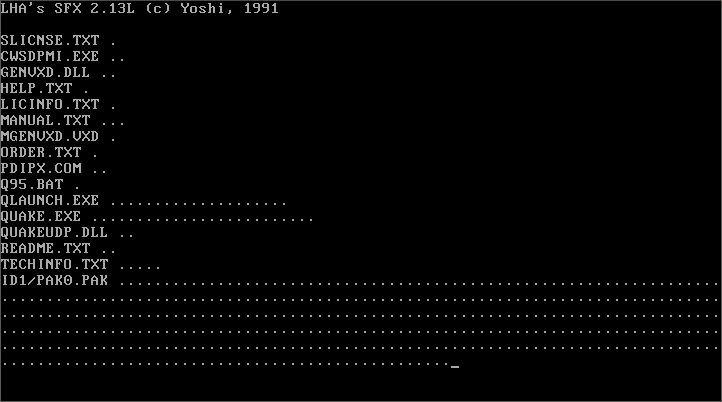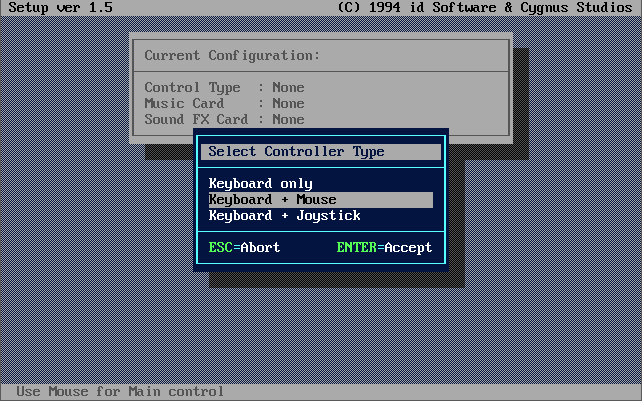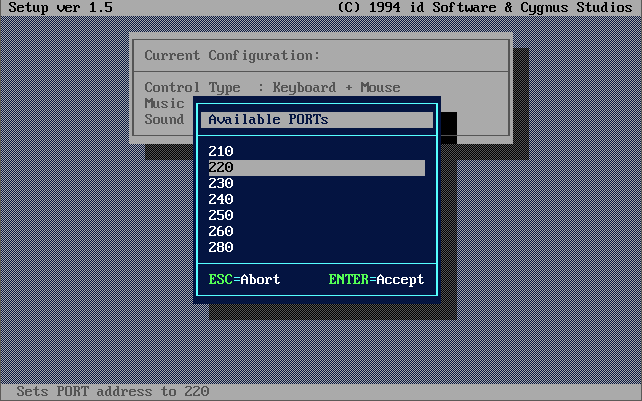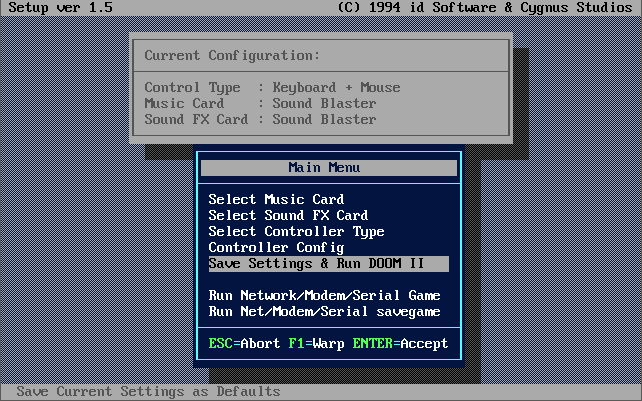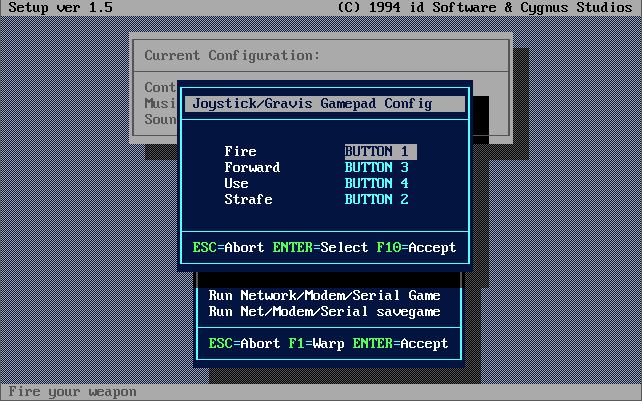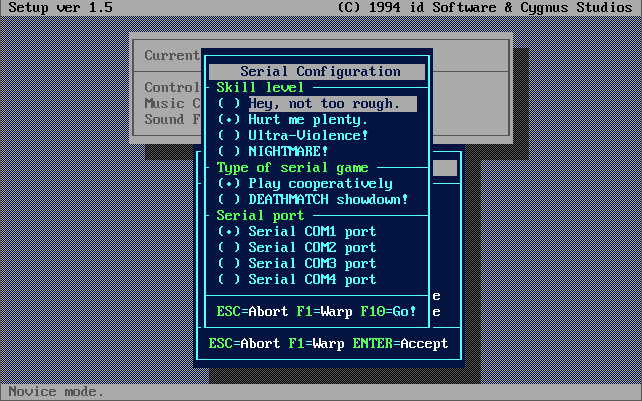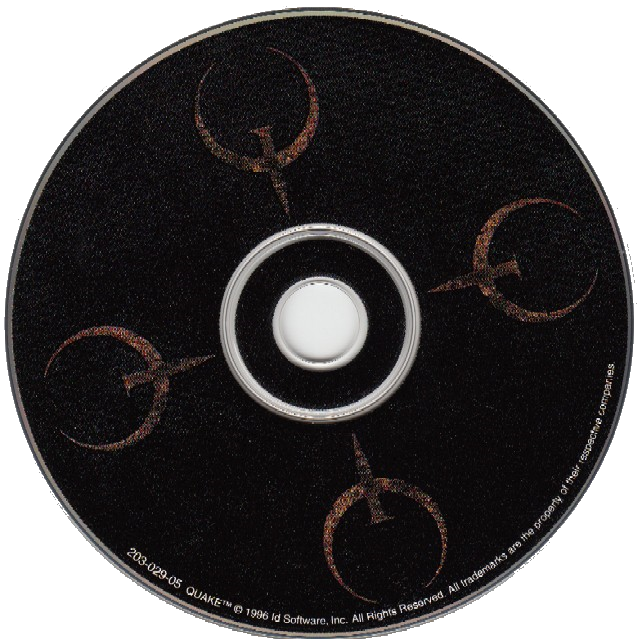 Quake
Quake
Released: June 1996
Published by: id Software
Developed by: id Software
Author(s): Michael Abrash, John Carmack, John Romero, John Cash, American James McGee, Adrian Carmack, Kevin Cloud, Sandy Peterson, Tim Willits, Michael Trent Reznor (Nine Inch Nails), Shawn C. Green, Jay Wilbur, Mike Wilson, Sandy Petersen.
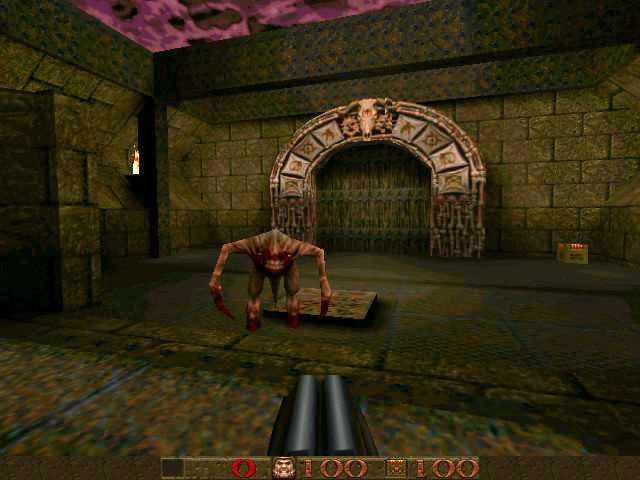
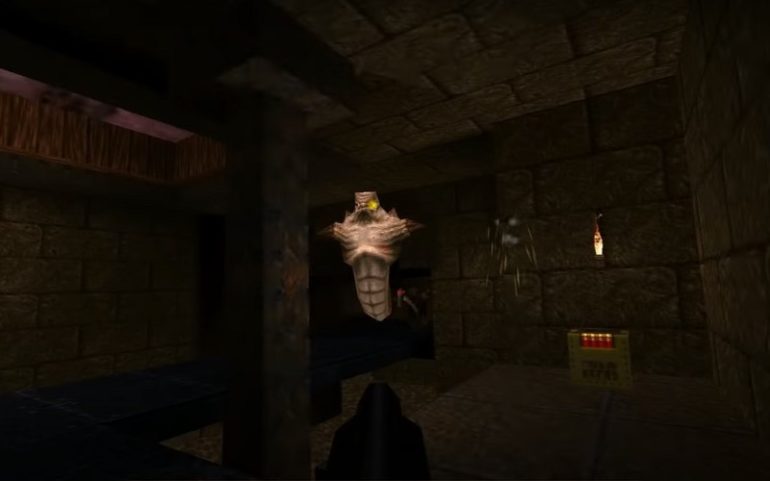
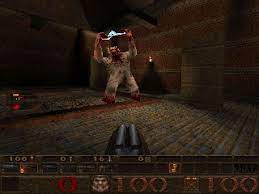
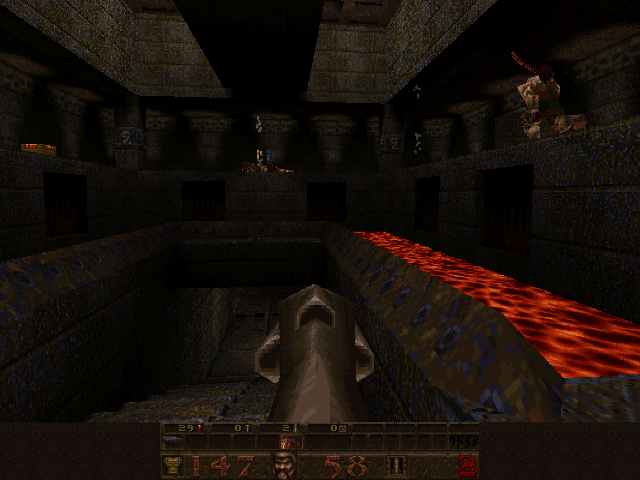
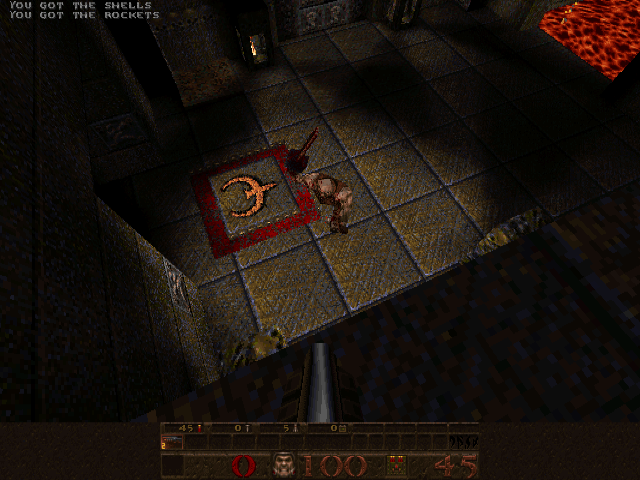
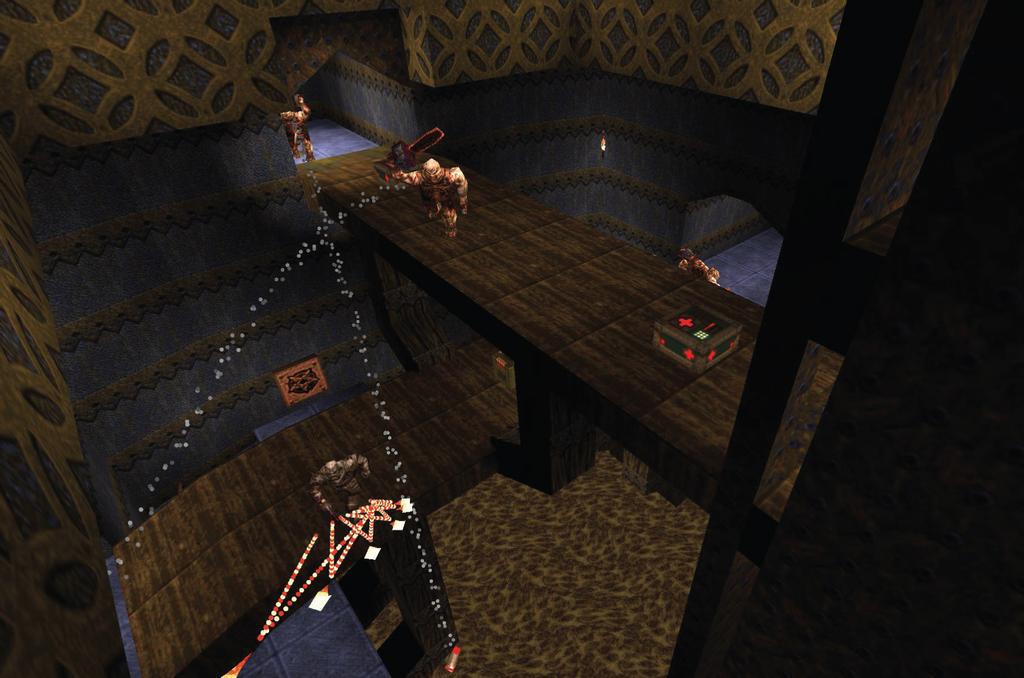
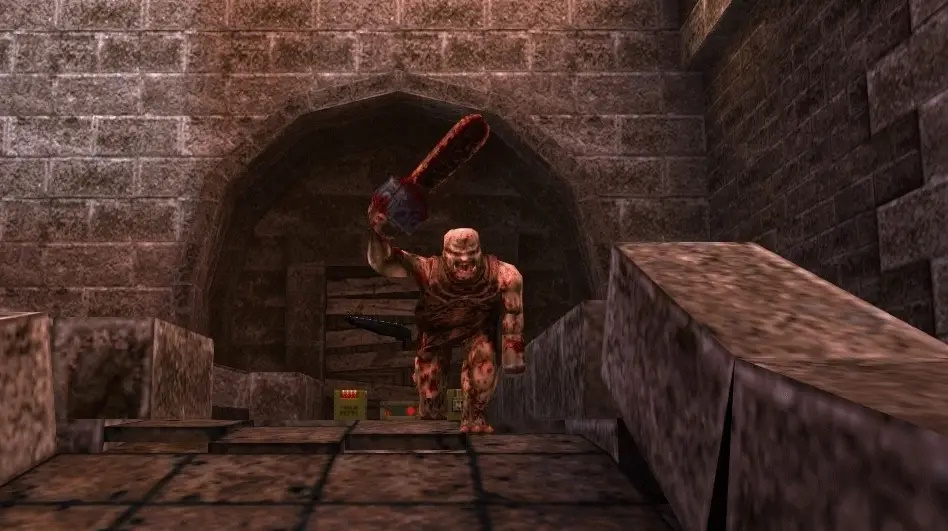
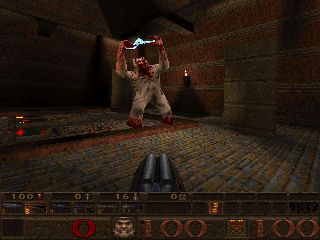
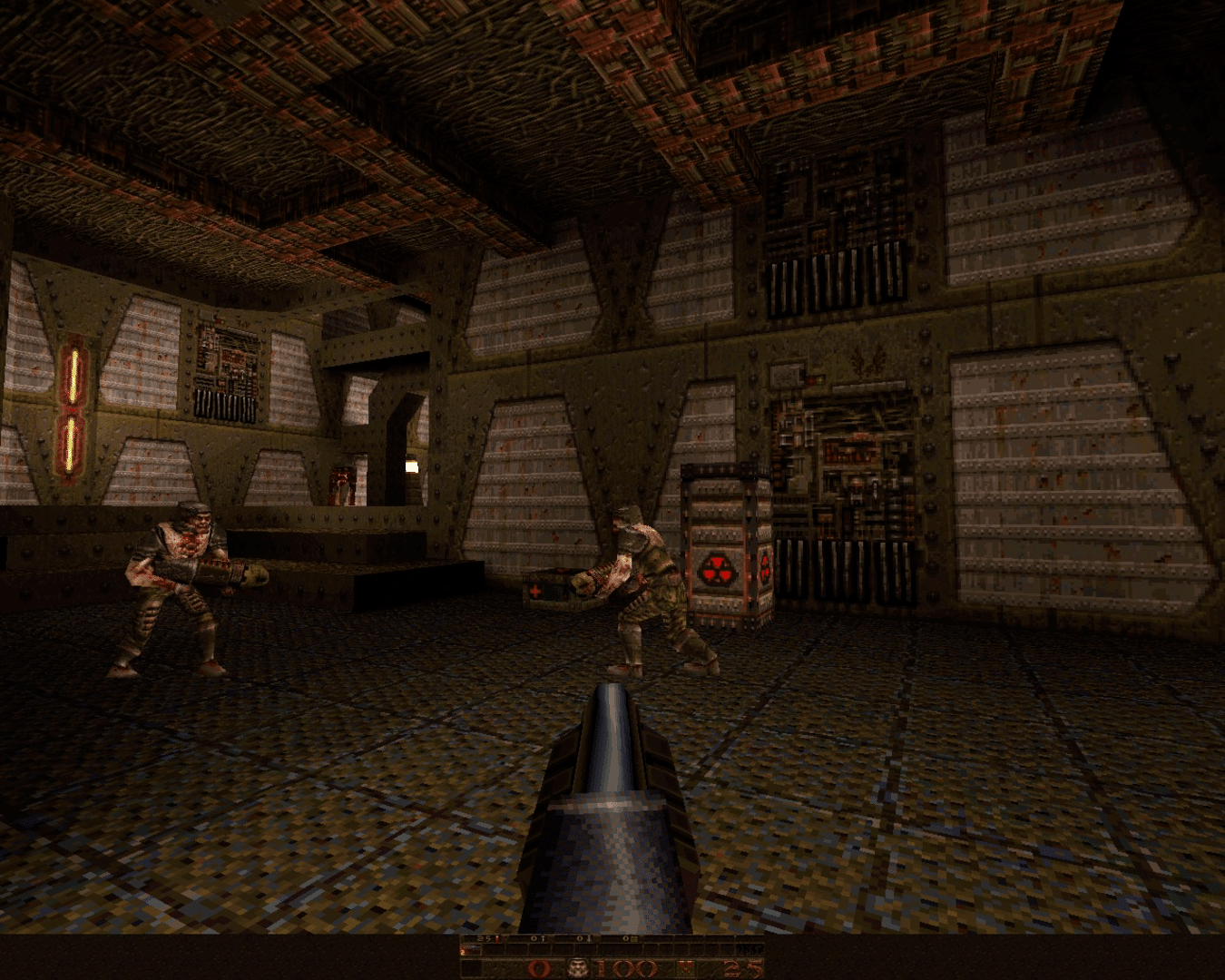

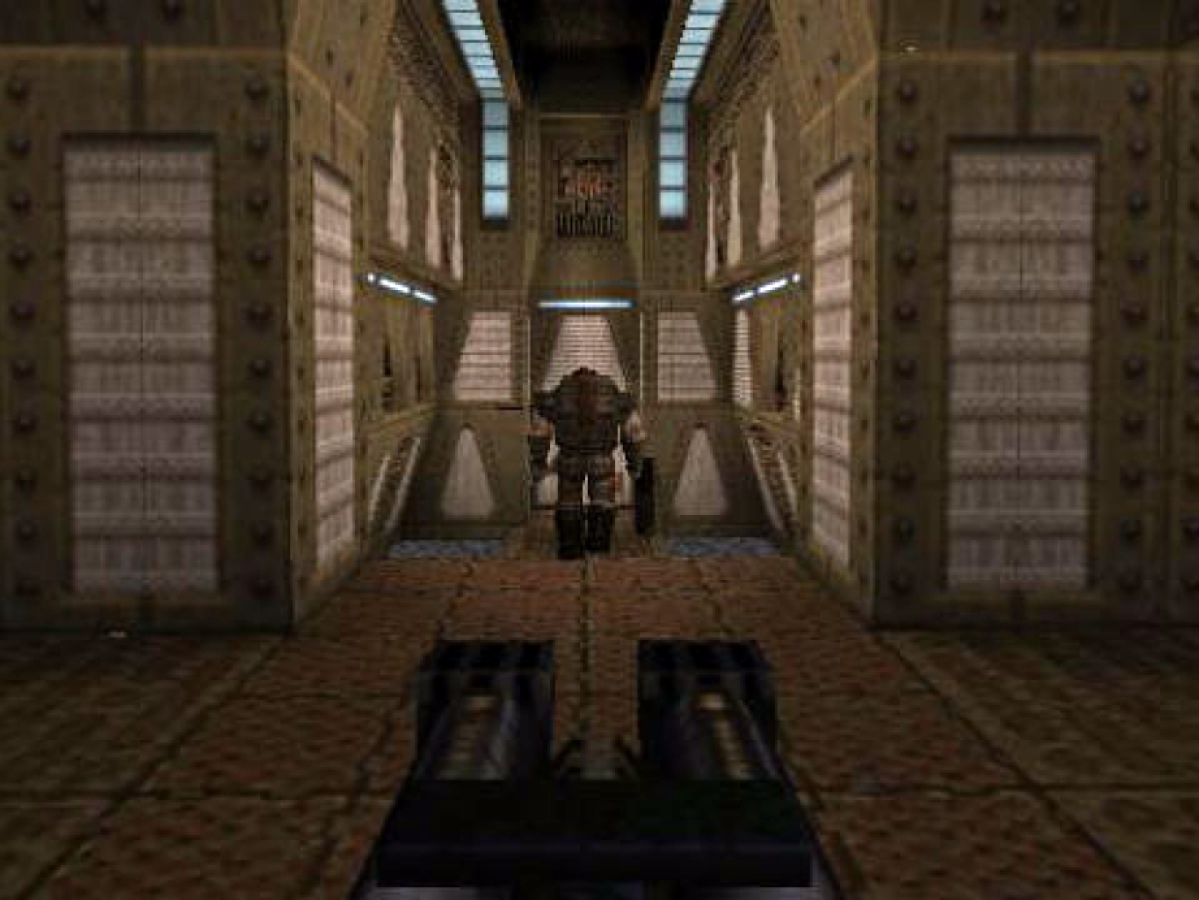
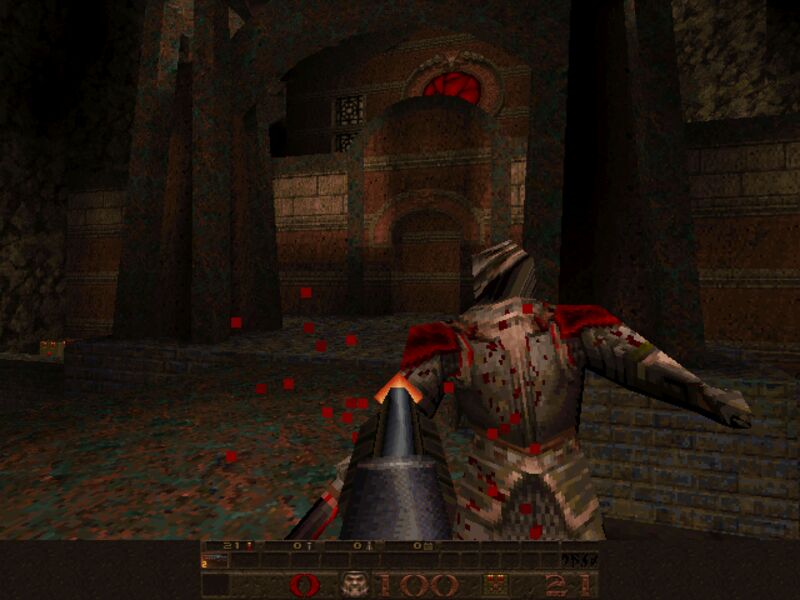
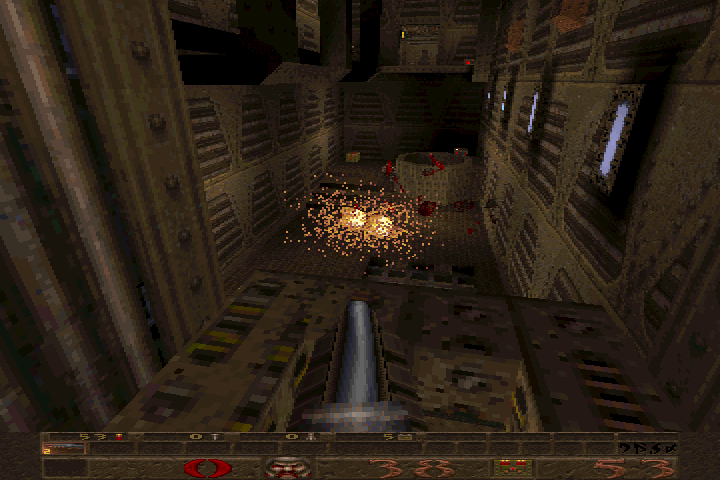
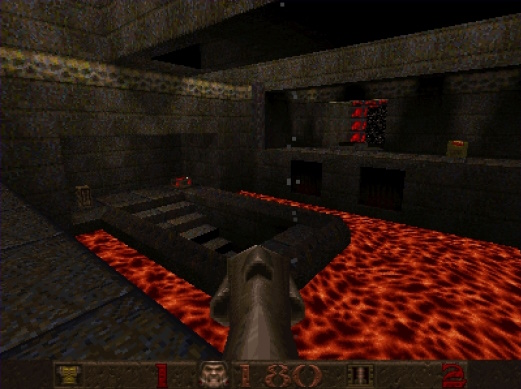
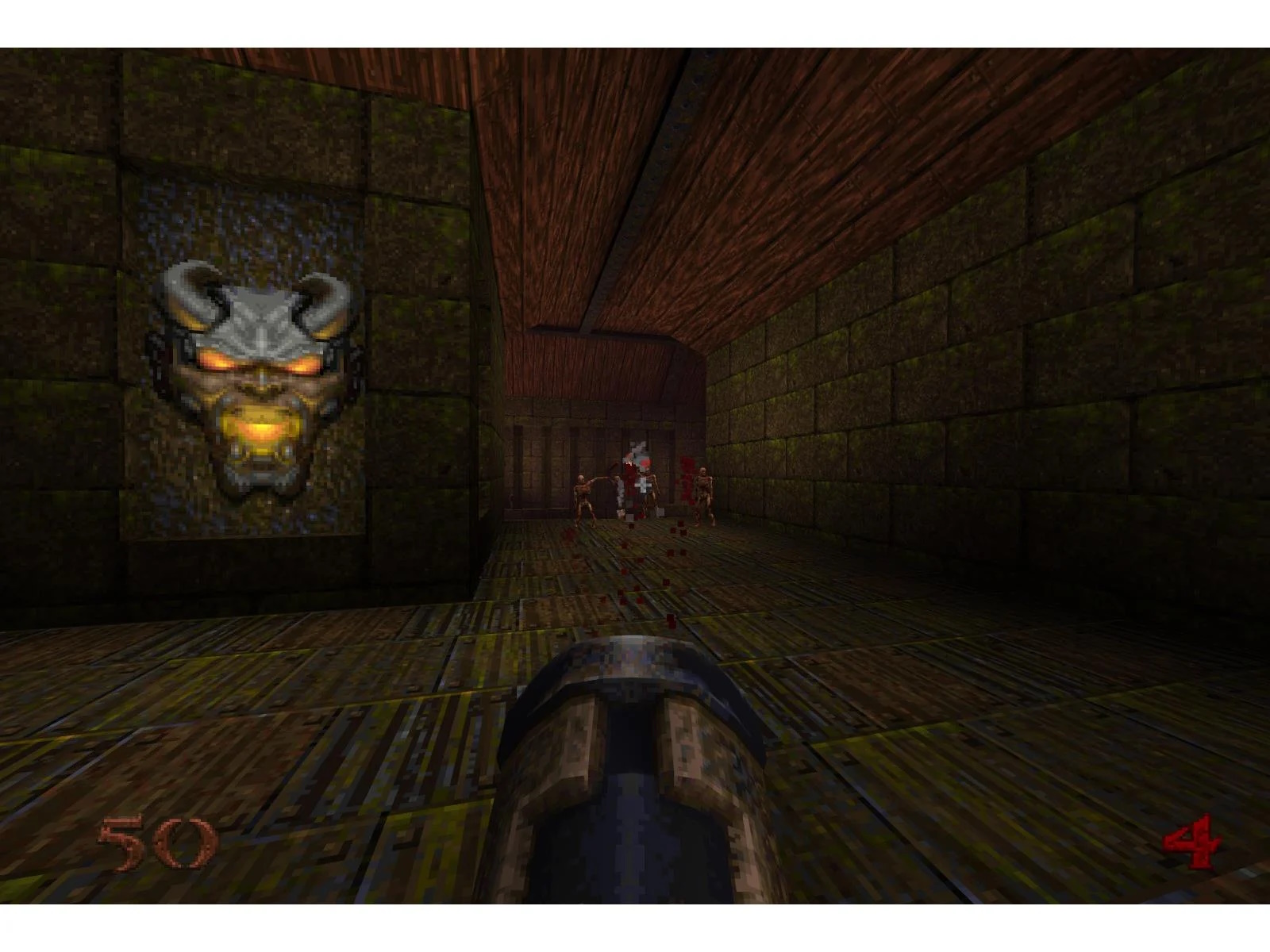

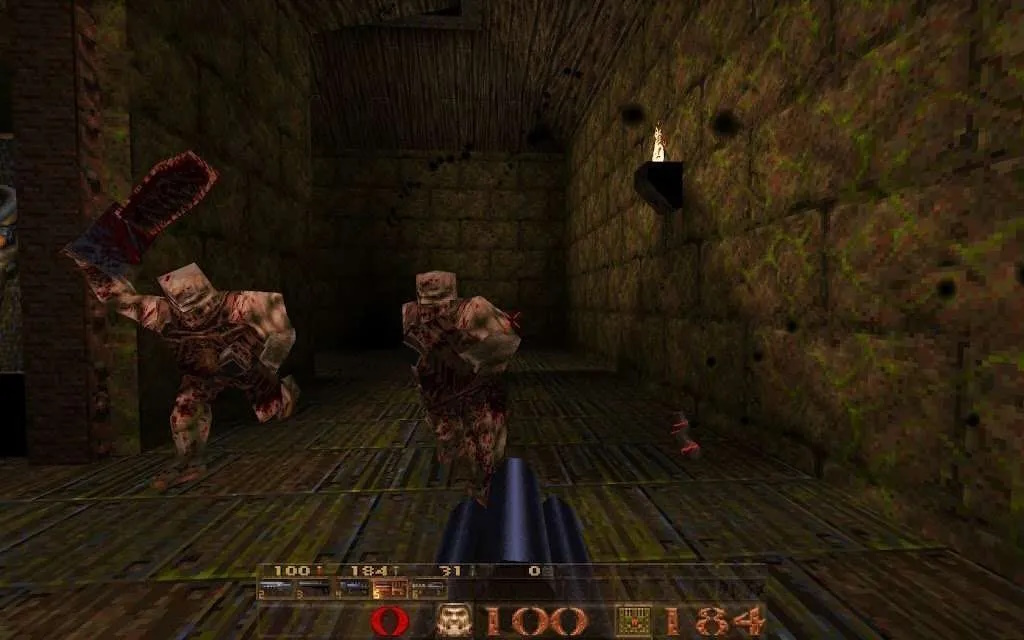

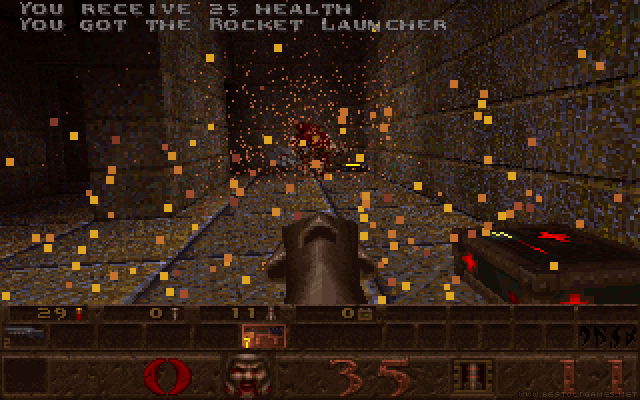
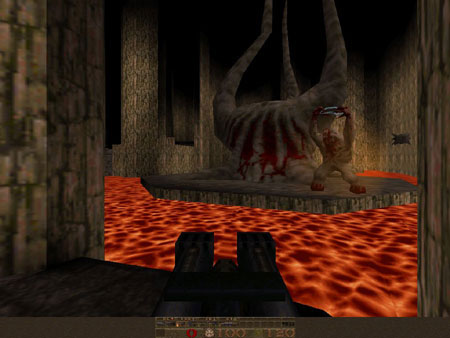
Quake running in VGA 320 x 200 up to 1280 x 1024 resolution
System Requirements
| System Requirements | 80486DX/4-100 CPU (Pentium 100 recommended), 8 MB RAM (16 MB recommended), 2x CD-ROM drive Graphics support for VGA (320x200), Super VGA (up to 1280 x 1024). Audio support for Sound Blaster, Sound Blaster 16/Pro, Sound Blaster AWE32 and General MIDI. |
|---|---|
| Original Media | One CD-ROM. |
| Installed Size (MB) | 80 MB |
Introduction
Following what they had learned from the Doom series of first-person shooters, id Software developed a brand new engine for their successor, and launched Quake two years later, in 1996. It was their first to have fully 3D models that were rendered in real-time. The engine had support for static lightmaps and 3D light sources for non-moving objects and Gouraud shading for moving objects. While the game was first released with software-only 3D rendering, a version called VQuake was released alongside Rendition's Verite 1000 which took advantage of the Rendition graphics card's onboard accelerator. For Windows 95, a version called GLQuake was developed that supported the OpenGL API.
As with Doom and Doom II, multiplayer modes made Quake yet another highly successful title. This time, 2 or more players could play simultaneously online or over a local network in a variety of modes. Deathmatch had players competing against each other where if a player dies they can immediately respawn somewhere else on the level. Cooperative mode allowed for 2 or more players to join a team to fight against other teams.
The single-player game comprises four episodes that have your protagonsit playing over 26 gothic/medieval levels against hordes of enemies that come through the "Slipgate", a kind of teleport from other worlds. Just as with Wolfenstein 3D and the Doom series, levels are unlocked by finding keys or switches to open doors, as well as secret areas to uncover. At the start of each episode you can choose from three different skill levels: easy, medium and hard. A fourth skill level, called "Nightmare" was hidden from the player due to its excessive difficulty.
True to their roots, id Software released the first episode on shareware.
Quake was widely anticipated by the DOS gaming community after its initial announcement shortly after the release of Doom II, but the engine's development took much longer than id Software had first planned. Various design decisions, anomisity and disagreements amongst the developers led to many of them departing id Software almost immediately after the game was released, including one of if's co-founders, John Romero. Despite this, the game was complete and was met with critical acclaim by games magazines and consumers.
Fan-made mods became widespread and helped popularise the game long after it would have ordinarily been confined to the history books. These comprised new maps, enemies, sounds and multiplayer modes. Subsequent games from third parties leveraged the power of the Quake engine after its source code was released to the public domain on the GNU General Public Licence in December 1999.
From where can it be run?
The game must be installed to your hard disk.
Copy Protection
Quake has no copy protection.
How to Setup
To install the game, Insert the CD-ROM and run INSTALL.BAT:
Immediately after installation is complete, the SETUP utility is run and takes you through controller, music and sound effects setup options:
2) Select Music Sound card and port address:

3) Select Sound Effects device, port address, IRQ, and DMA channel:
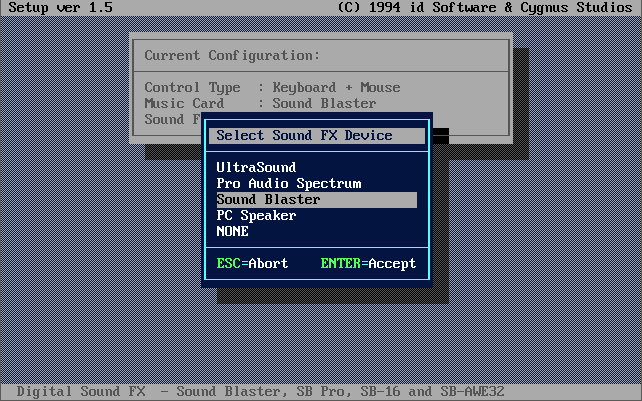

4) Select Number of Sound FX to mix:
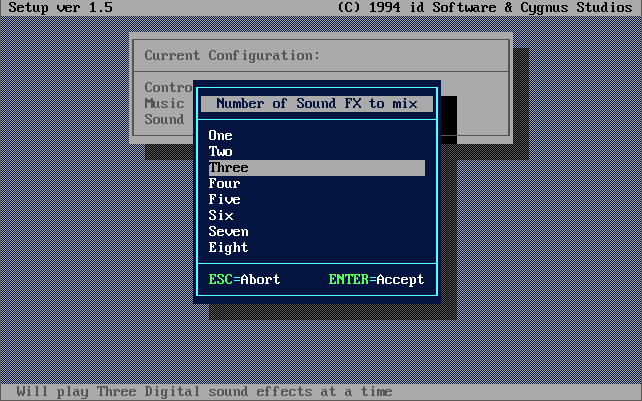
6) From left: Keyboard/Mouse/Joystick configuration:
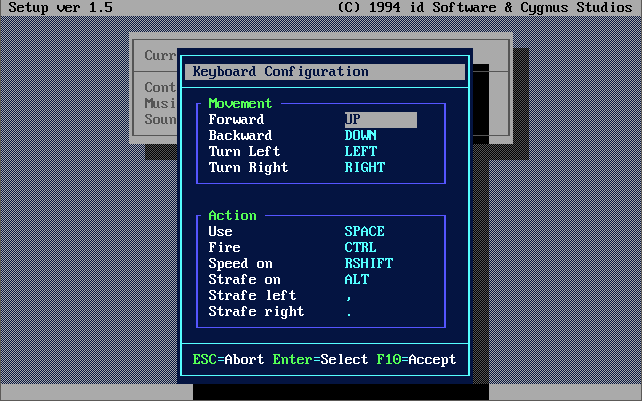

7) If you choose to run a network/modem/serial game, you will get this set of options depending on the type of connection you want to use:
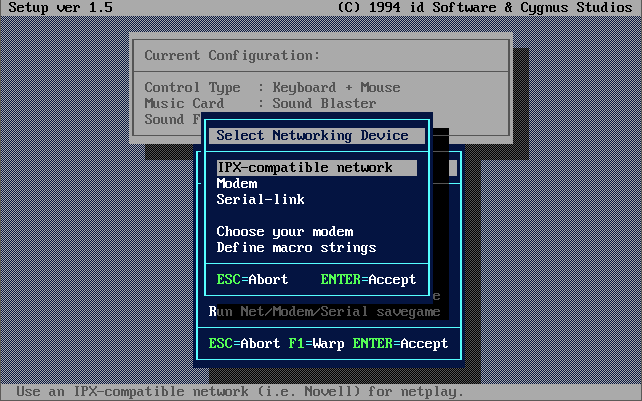
From left: IPX-compatible network (Novell), modem, and serial link:
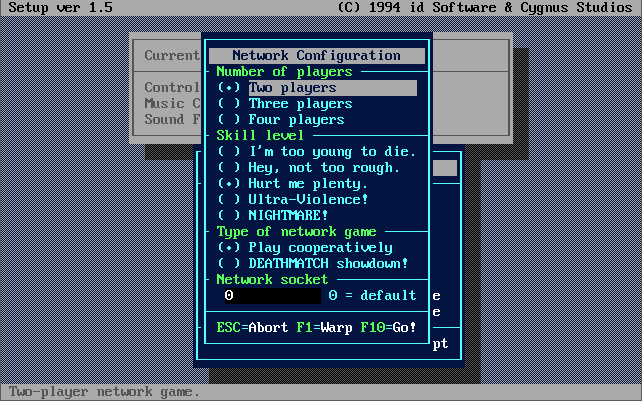
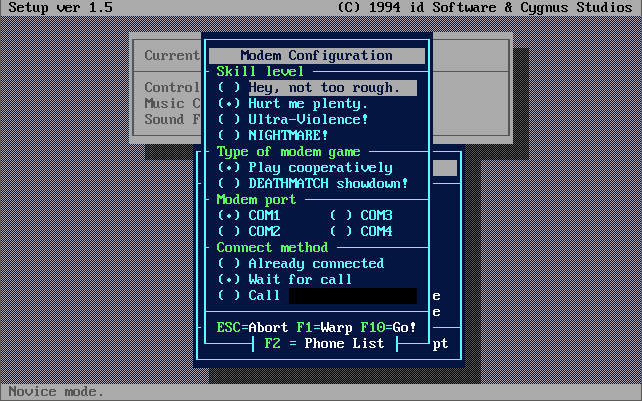
Problems
Symptom:
Cause:
Resolution:
To Quit the Game
Hit ESC to bring up the game menu. Then use the cursor keys to move the highlight down to 'Quit Game' and hit Enter.
Supporting Documents
Here are the original documents that came with the game:
Save Games
You can save your progress at any time during the game, and reload at any time. Save games are stored in 'slots'. The save game files contain player location, health, weapon, ammo and armor status, live/dead status of all monsters on the map level, and more.
Versions of the game known to exist
| Version | Date | Comments |
|---|---|---|
| 1.01 | 13 Jul 1996 | First shareware release. |
Original CD-ROM Contents
The single CD-ROM contains both the shareware Episode 1 and the subsequent Episodes 2 to 4 in encrypted form.
v1.01, Disc 1 of 1 (CD-ROM): Directory of E:\. |
|
Installed Directory Contents
Once installed, the following directory structure exists in the game directory which by default is <drive>:\QUAKE_SW
Original shareware version only, version 1.01:
Directory of C:\QUAKE_SW\. |
